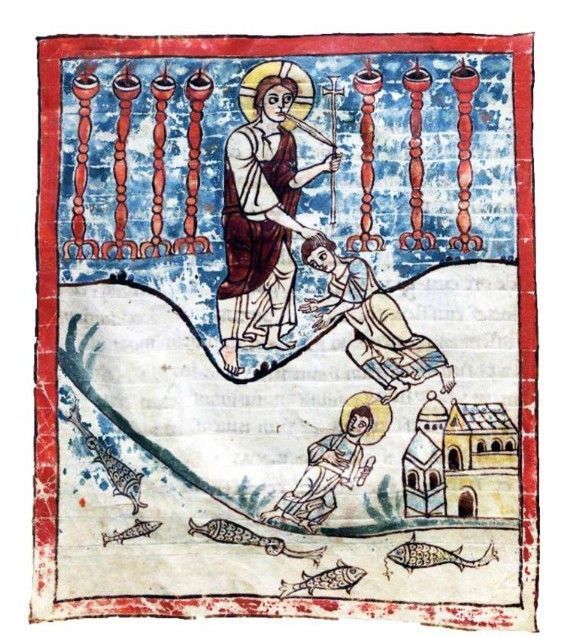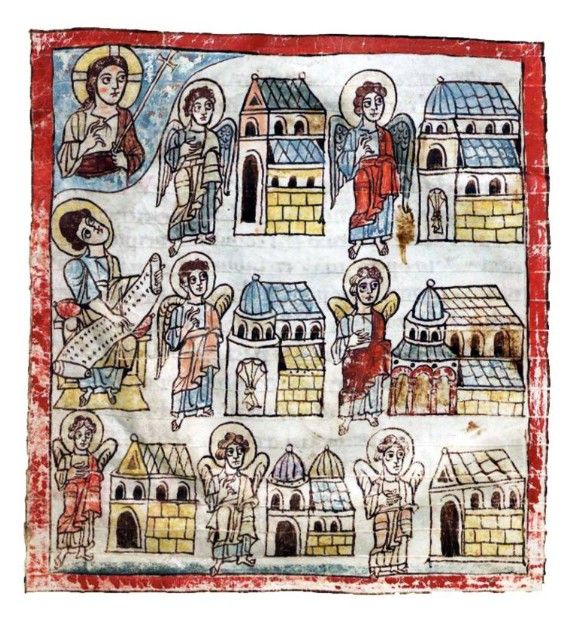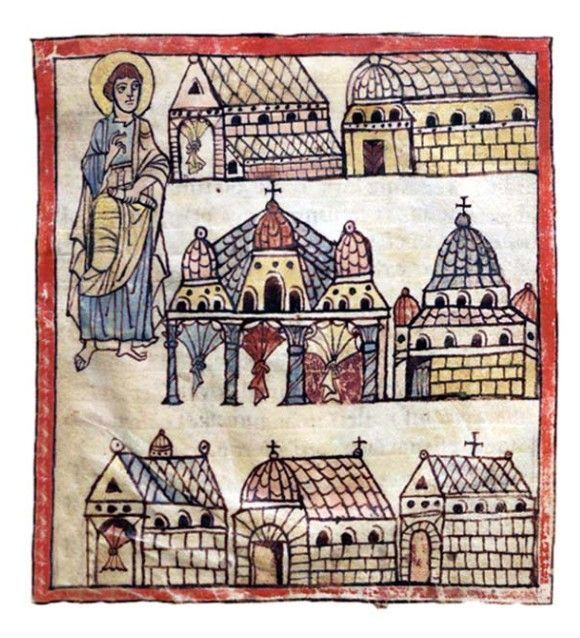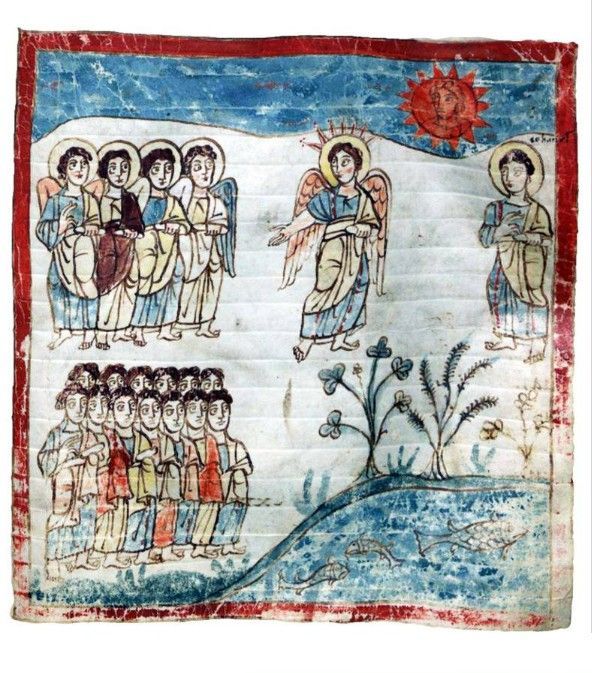APOCALIPSIS DE TREVERIS

Notas Previas
Reference: Biblioteca de la ciudad de Tréveris (Codex 31)
Dimensions: 262 x 216 mm.
148 parchment pages. written in Latin.
74 Full page thumbnails with the text on the facing page.
Entorno histórico
The Trier Apocalypse (Trèves in French or Trier in German) is the oldest surviving illustrated version of the Apocalypse of John and contains the longest cycle of images from the last book of the Bible. Although its origin is not known, it is believed that it was written in a monastery located in the west of the Carolingian Empire, in the vicinity of the Abbey of Saint-Martin de Tours, in the north of present-day France.
The manuscript was found in the 11th century in the monastery of Saint Eucharius in Trier. With the secularization of the the convents in 1802, it was transferred to the library of the central school of the city and then to the municipal library when it was created in 1804. During the World War II, the collections were moved for a time to the city of Giessen, to finally return to the city of Trier after the conflict.
the convents in 1802, it was transferred to the library of the central school of the city and then to the municipal library when it was created in 1804. During the World War II, the collections were moved for a time to the city of Giessen, to finally return to the city of Trier after the conflict.
Dating between the years 800, the date of Charlemagne’s coronation, and 820, which is why it is very shortly after the original Commentaries on the Apocalypse by Beato de Liébana, now missing, it is the first Early Medieval Apocalypse, which would have been carried out from a Roman manuscript from the 6th century, which has not survived. It has a layout typical of the Carolingian period, with the text on the full page facing the image on the opposite page, images that in some cases are directly inspired by ancient iconography, but with adaptations.
Descripción
The Trier Apocalypse is the oldest surviving version of the book of Saint John of Patmos. It consists of 148 parchment pages in which while the text is included on one, the image is framed in red on the opposite, most of them full page, a common structure in Carolingian manuscripts, although its painted decoration is so special that it has no parallel in Carolingian illumination.
 Of its 74 images, each one illustrates the text sequence associated with it. The illustrations, colored pen drawings, form the most complete illustrated cycle of this book, the last of the New Testament, a cycle that possibly comes from Late Antiquity, since in some of them there are characters reminiscent of ancient representations of mythological characters. .
Of its 74 images, each one illustrates the text sequence associated with it. The illustrations, colored pen drawings, form the most complete illustrated cycle of this book, the last of the New Testament, a cycle that possibly comes from Late Antiquity, since in some of them there are characters reminiscent of ancient representations of mythological characters. .
This manuscript is one of the few in which it has been possible to find parallels to a previous artistic creation, which perhaps partly disappeared due to the controversies that arose over this book, which will be reflected in the works of many medieval miniaturists, which gives an idea of its importance in the analysis of the European medieval miniature.
The text, in Latin written in part with a Carolina minuscule letter, comes from a much earlier Italian Vulgate, a text that was corrected in the 11th century.













